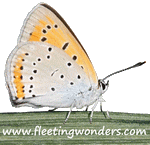| |
| |
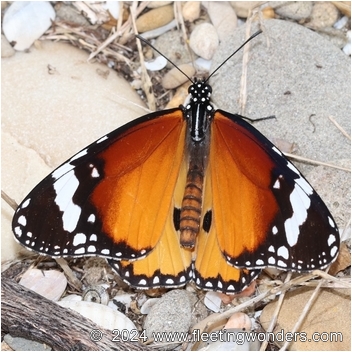 | | 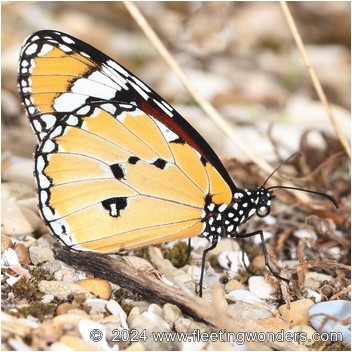 | |
| 1] male of Danaus chrysippus alt.1m - Hérault (France) - 13/10/2024 | | 2] same specimen as 1]
| |
| | | | |
| | | | |
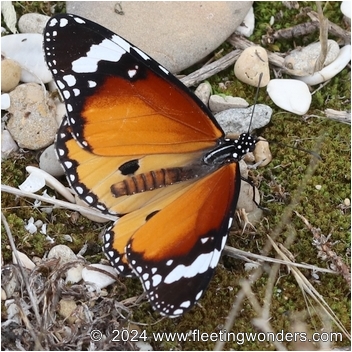 | | 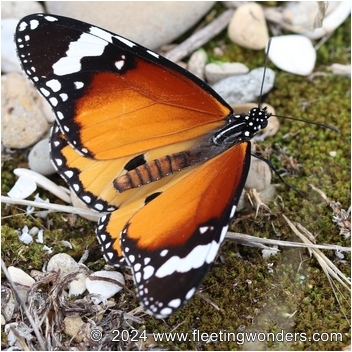 | |
| 3] same specimen as 1] | | 4] same specimen as 1] | |
| | | | |
| | | | |
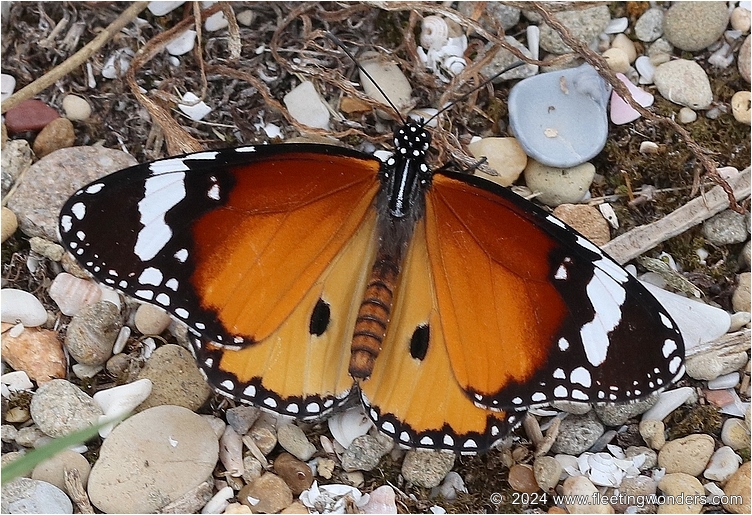 | |
| 5] same specimen as 1]. The large black spot on the hindwing is the androconial patch, in males only. | |
| | | | |
| | | | |
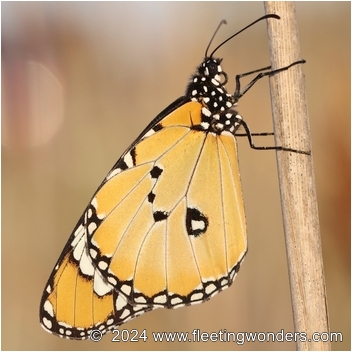 | | 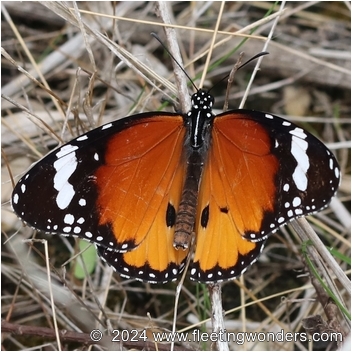 | |
| 6] other male alt.1m - Hérault (France) - 13/10/2024 | | 7] other male alt.1m - Hérault (France) - 13/10/2024 | |
| | | | |
| | | | |
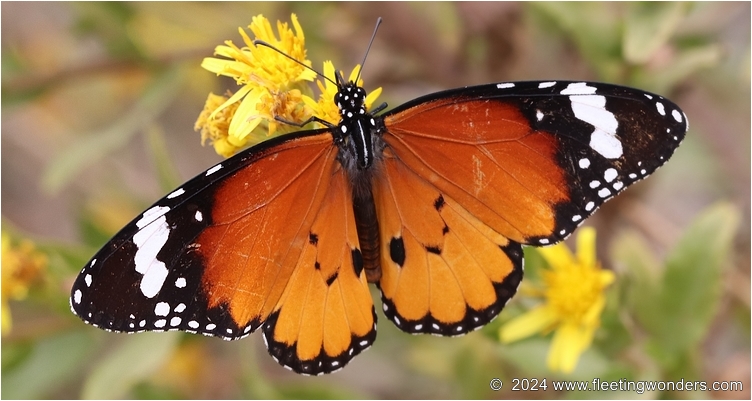 | |
| 8] same specimen as 7] | | | |
| | | | |
| | | | |
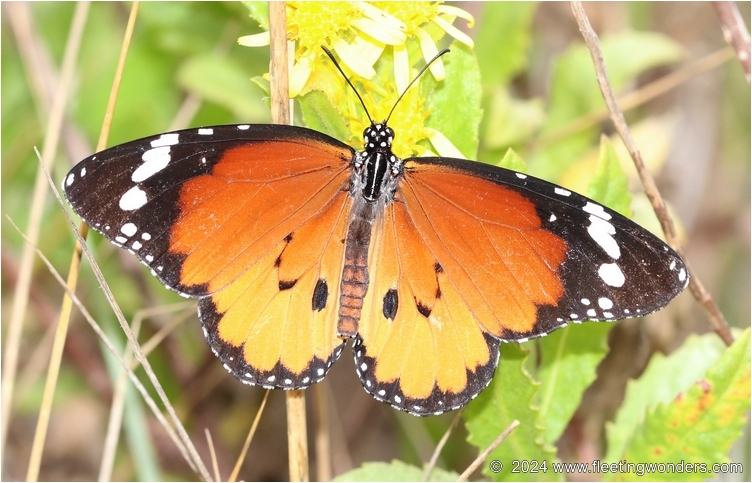 | |
| 9] other male alt.1m - Hérault (France) - 13/10/2024 | | | |
| | | | |
| | | | |
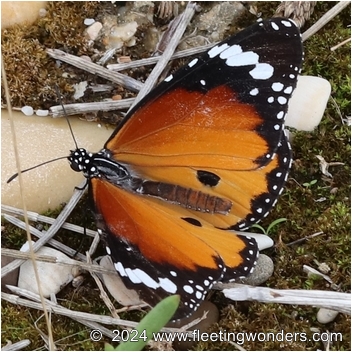 | | 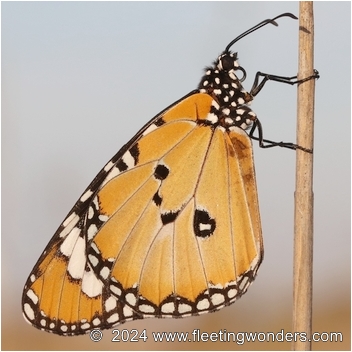 | |
| 10] other male alt.1m - Hérault (France) - 13/10/2024 | | 11] other male alt.1m - Hérault (France) - 13/10/2024 | |
| | | | |
| | | | |
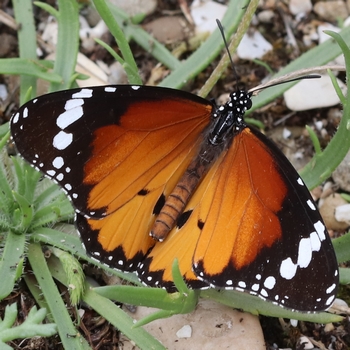 | | 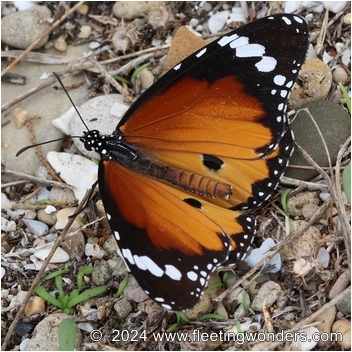 | |
| 12] other male alt.1m - Hérault (France) - 13/10/2024 | | 13] same specimen as 12] | |
| | | | |
| | | | |
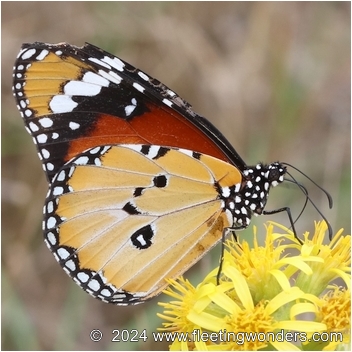 | |  | |
| 14] other male alt.1m - Hérault (France) - 13/10/2024 | | 15] same specimen as 14] | |
| | | | |
| | | | |
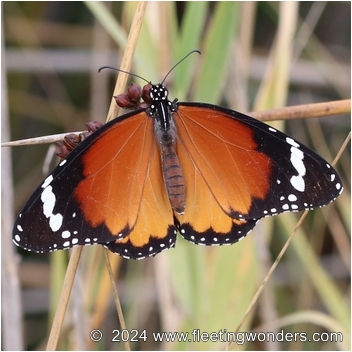 | | 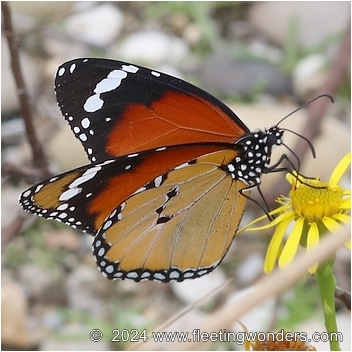 | |
| 16] female of Danaus chrysippus alt.1m - Hérault (France) - 13/10/2024 | | 17] same female as 16]
| |
| | | | |
| | | | |
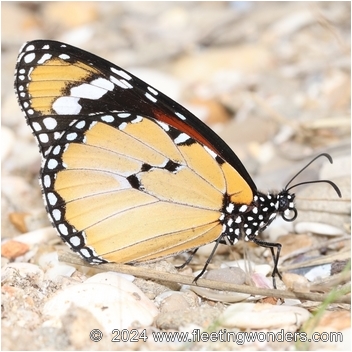 | | 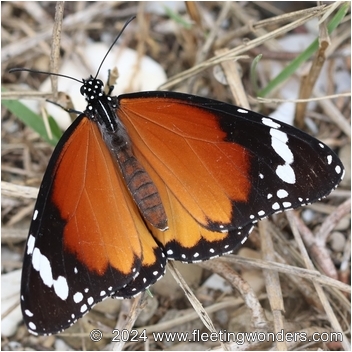 | |
| 18] same female as 16] | | 19] same female as 16] | |
| | | | |
| | | | |
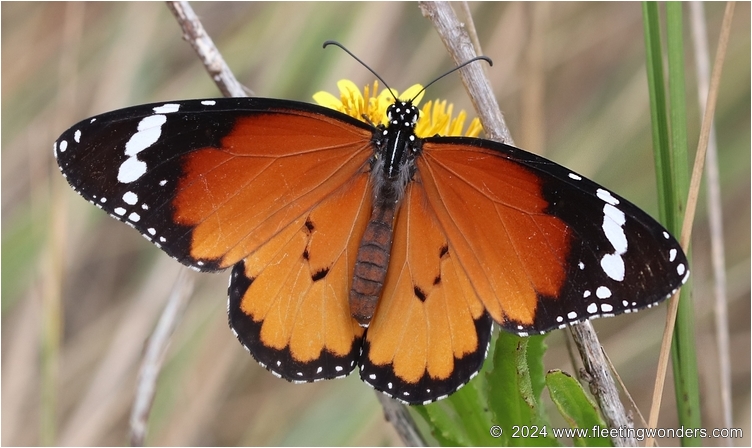 | |
| 20] same female as 16] | | | |
| | | | |
| | | | |
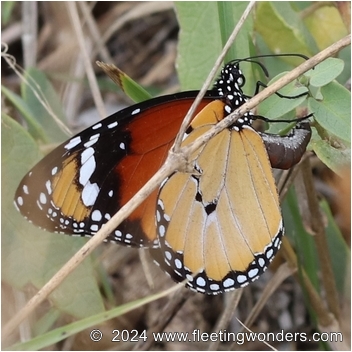 | | 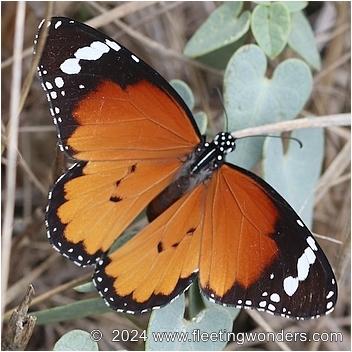 | |
| 21] same female as 16], laying an egg on Cynanchum acutum | | 22] same female as 16], laying an egg on Cynanchum acutum | |
| | | | |
| | | | |
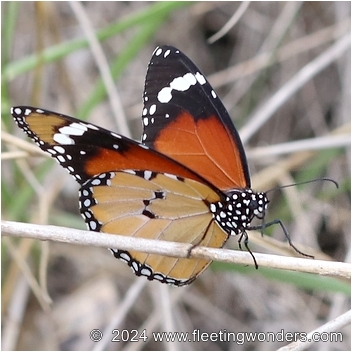 | | 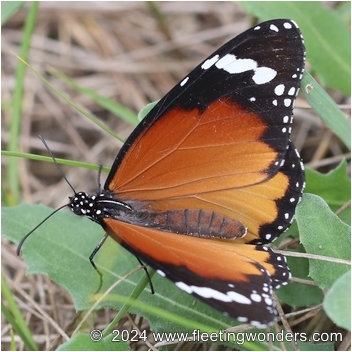 | |
| 23] same female as 16] | | 24] same female as 16] | |
| | | | |
| | | | |
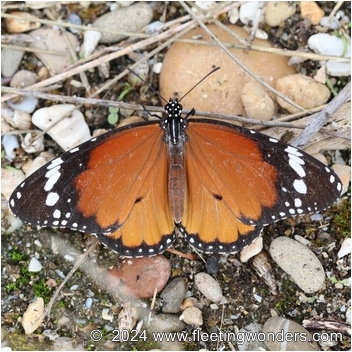 | | 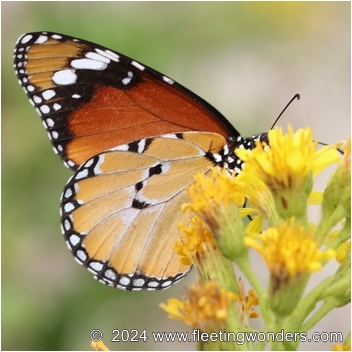 | |
| 25] female alt.1m - Hérault (France) - 13/10/2024 | | 26] same female as 25] | |
| | | | |
| | | | |
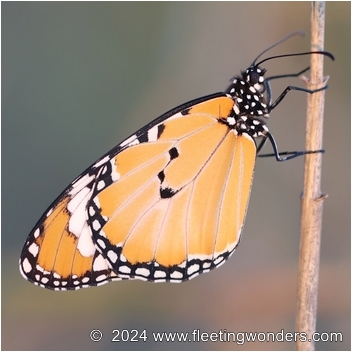 | | 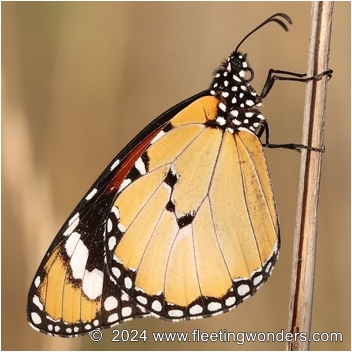 | |
| 27] other female alt.1m - Hérault (France) - 13/10/2024 | | 28] other female alt.1m - Hérault (France) - 13/10/2024 | |
| | | | |
| | | | |
 | | 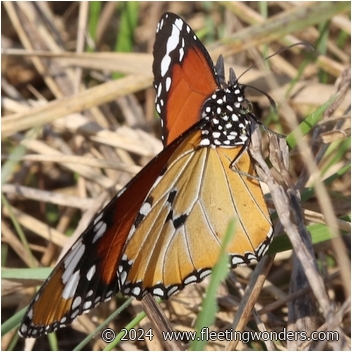 | |
| 29] nice female basking in the sun alt.1m. She was the only Plain Tiger seen in this habitat that day (late emergence). Despite cooler temperatures at this time, she was actively looking for the host-plant to lay eggs - Hérault (France) - 08/11/2024 | | 30] same female as 29]
| |
| | | | |
| | | | |
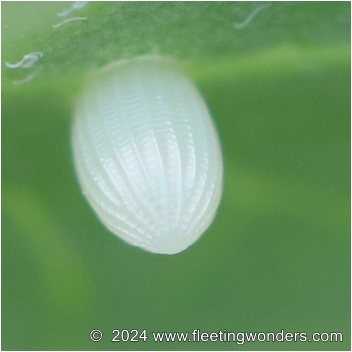 | | 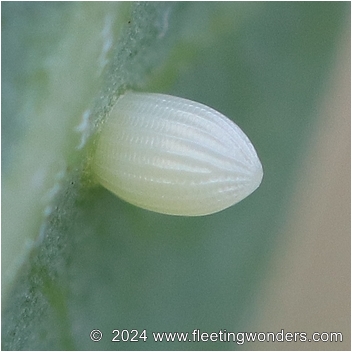 | |
| 31] close-up of an egg laid by the female from picture 21] | | 32] same egg as 31] | |
| | | | |
| | | | |
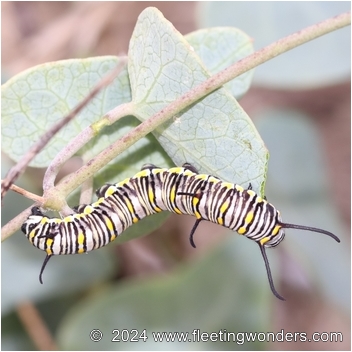 | | 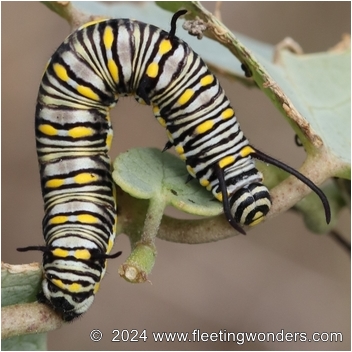 | |
| 33] mature caterpillar of Danaus chrysippus, feeding on its host-plant, Cynanchum acutum alt.1m - Hérault (France) - 13/10/2024 | | 34] same caterpillar as 33]
| |
| | | | |
| | | | |
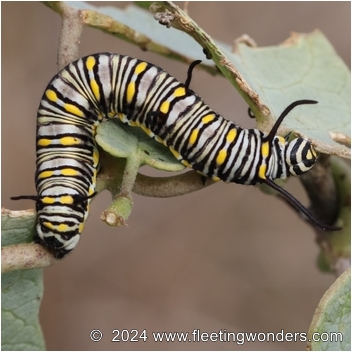 | | 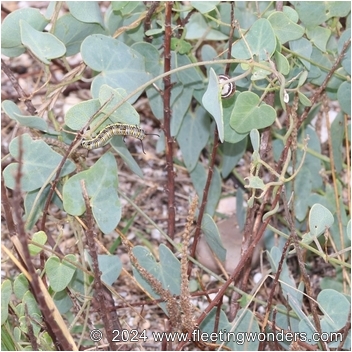 | |
| 35] same caterpillar as 33] | | 36] same caterpillar as 33], on its host-plant | |
| | | | |
| | | | |
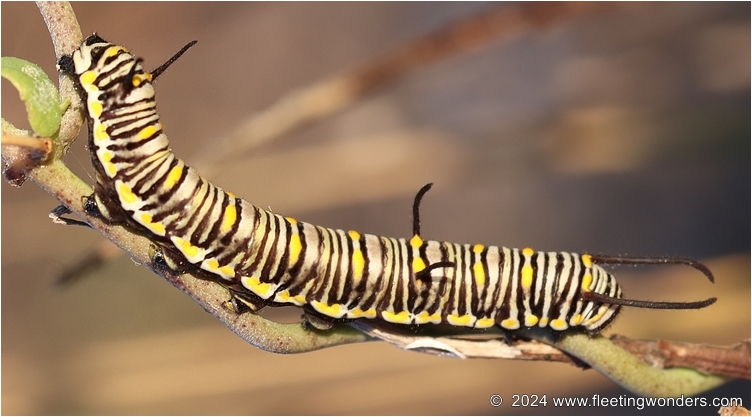 | |
| 37] same caterpillar as 33] | |
| | |
| | |
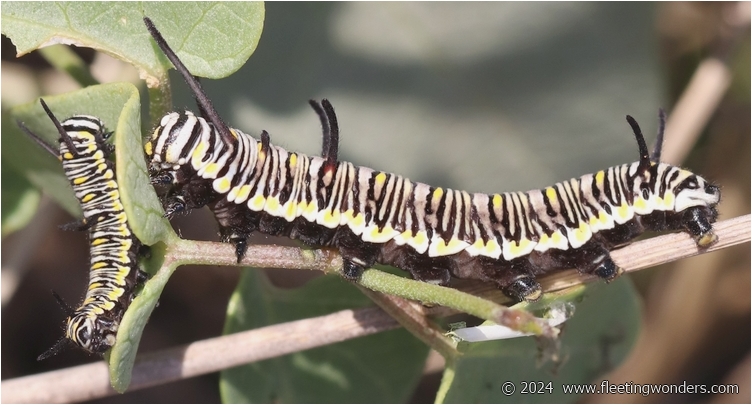 | |
| 38] a small sized caterpillar (lenght : 1.8cm) and a mature caterpillar (lenght : 4.1cm) on their host-plant, Cynanchum acutum alt.1m. The largest larva shows a fourth short pair of horns - Hérault (France) - 08/11/2024 | |
| | |
| | |
 | |
| 39] a small sized caterpillar (lenght : 2.2cm) on its host-plant - Hérault (France) - 08/11/2024 | |
| | |
| | |
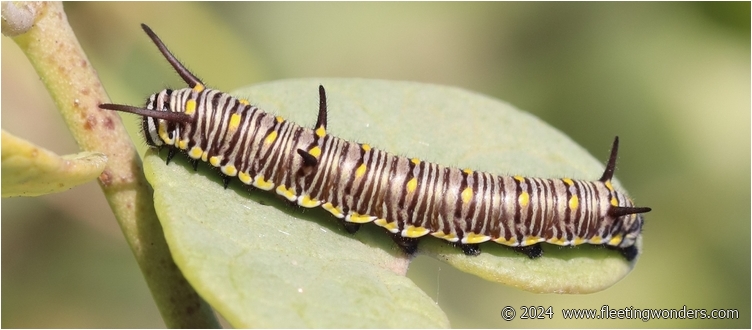 | |
| 40] same larva as 39] | |
| | |
| | |
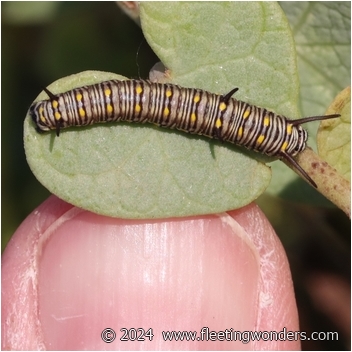 | | 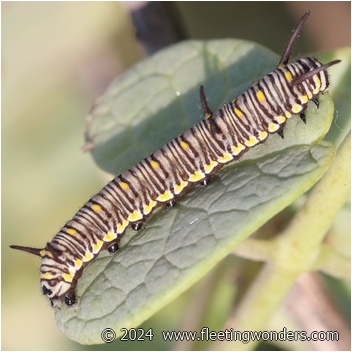 | |
| 41] same larva as 39], near a thumbnail | | 42] same larva as 39] | |
| | | | |
| | | | |
 | | 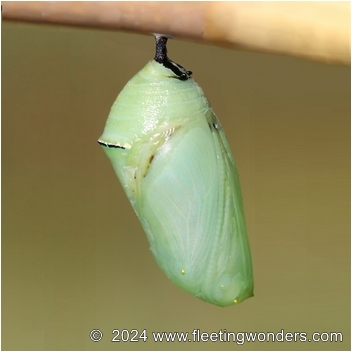 | |
| 43] chrysalis, which originated from the caterpillar shown in 33] - Hérault (France) - 22/10/2024 | | 44] same chrysalis as 43]
| |
| | | | |
| | | | |
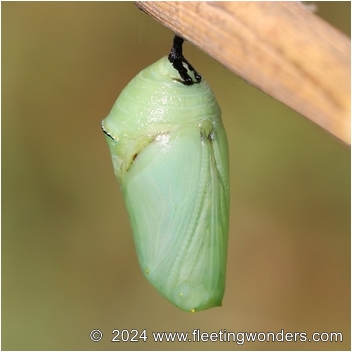 | | 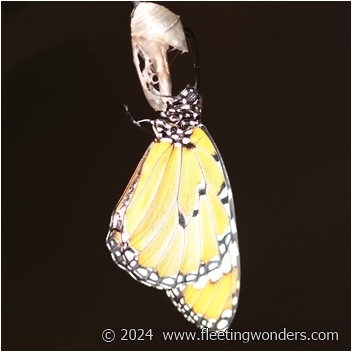 | |
45] same chrysalis as 43]
| | 46] view of the butterfly which emerged from the chrysalis shown in 43] on the 6th of November, 2024. This female was released into her habitat, where some other Plain Tigers were still flying. | |
| | | | |
| | | | |
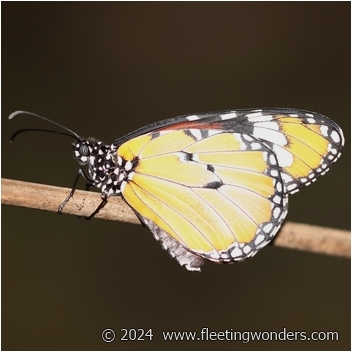 | | 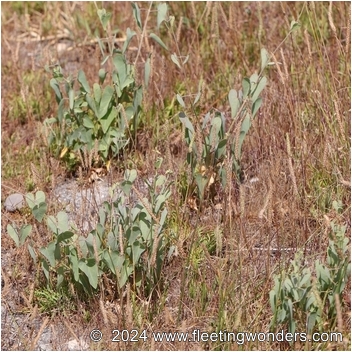 | |
47] same female as 46]
| | 48] view of the host-plant, Cynanchum acutum from the Asclepiadaceae family. Plants of this group are also named "milkweeds", as their leaves and stems exude a white latex when damaged. This latex contains toxic glycosides. Caterpillars of Plain Tigers accumulate these substances which give them protection against predators - Hérault alt.1m (France) - 17/06/2022 | |
| | | | |
| | | | |
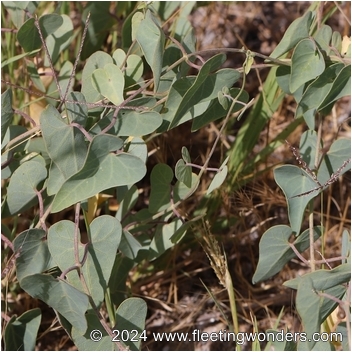 | | 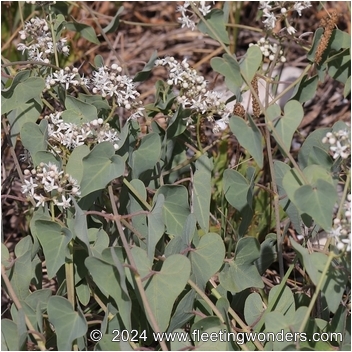 | |
| 49] closer view of Cynanchum acutum alt.1m - Hérault (France) - 17/06/2022 | | 50] a flowering head of Cynanchum acutum alt.1m - Hérault (France) - 17/06/2022 | |
| | | | |
| | | | |
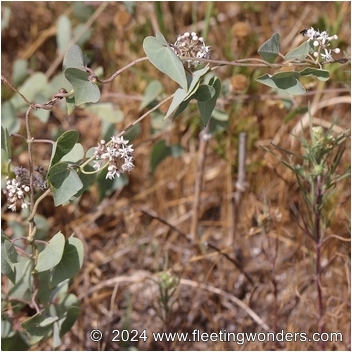 | | 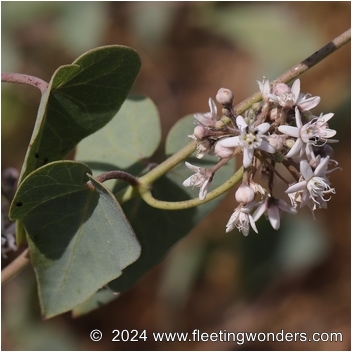 | |
| 51] Cynanchum acutum is a climbing plant whose stems wrap around various supports - Hérault (France) - 17/06/2022 | | 52] closer view of a Cynanchum acutum flower - Hérault (France) - 17/06/2022 | |
| | | | |
| | | | |
| | | | |
| Description : | |
| |  | | |
| Flight period : | |
| | | | |
| | | | |
| Habitat : | |
| | | | |
| | | | |
